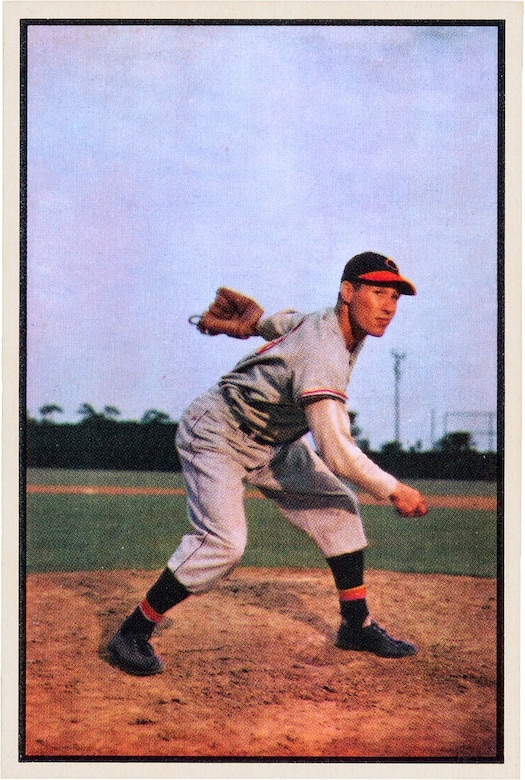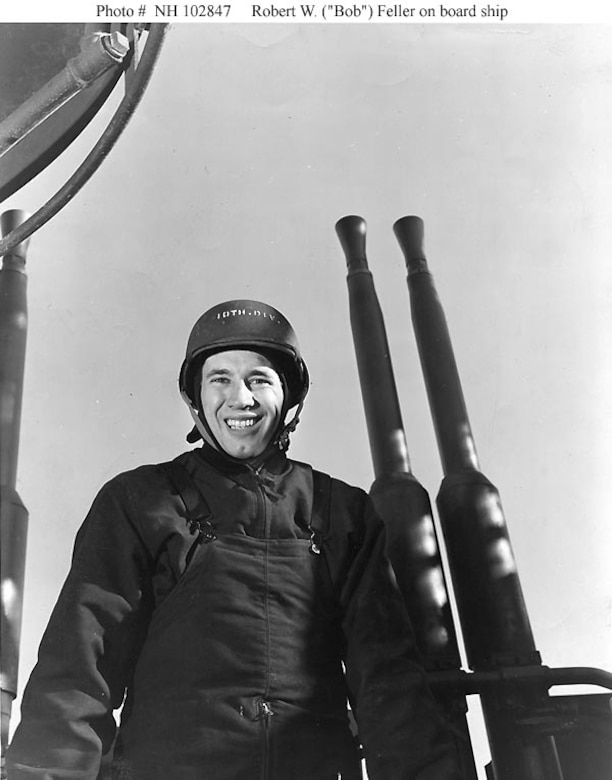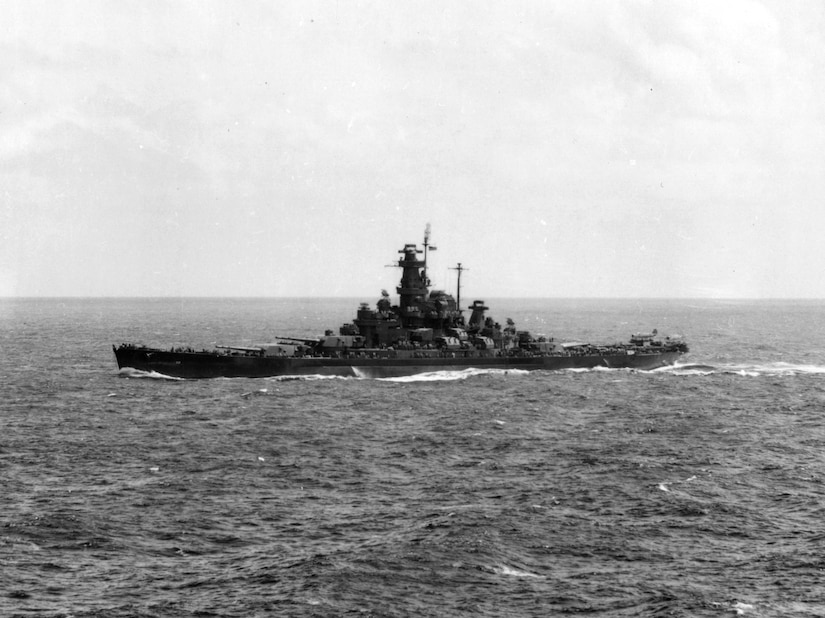Oct. 27, 2020 | , DOD News
Robert "Bob" William Andrew Feller was a renowned pitcher for the Cleveland Indians from 1936 to 1941 and from 1945 to 1956.

During his 18 seasons, he pitched 3,827 innings with a win-loss record of 266-162. He pitched 279 complete games, 44 shutouts and had a 3.25 earned run average.
He was an eight-time All-Star and helped the Indians win the 1948 World Series.
Baseball great Ted Williams called Feller "the fastest and best pitcher I ever saw during my career."

Feller most likely would have boosted the Indians' scoreboard even more, except for America's entry into World War II after the attack on Pearl Harbor, Hawaii, on Dec. 7, 1941.
After learning of the attack, Feller, then 23, decided that the right thing to do would be to serve. "The last thing on my mind right then was playing baseball. I immediately decided to enlist in the United States Navy," he said decades later. "People today don't understand, but that's the way we felt in those days. We wanted to join the fighting."
On Dec. 9, 1941, he gave up the chance to earn $100,000 with the Indians and became the first professional athlete to join the Navy after Pearl Harbor.
In 1942, after basic training, Feller was stationed at Norfolk Naval Station, Virginia. He found time there to pitch for the base's Bluejackets baseball team, which went 92-8 that year.
Feller then served as a gun captain on the battleship USS Alabama. In 1943, they sailed in the North Atlantic in support of combat operations in Europe.

In August 1943, they departed for the Pacific Theater.
During that time through the spring of 1944, the Alabama served as a carrier task force escort, protecting the carriers from surface and air attacks. The ship also bombarded Japanese positions, fought off enemy aircraft, and, in some cases, supported amphibious landings on Betio, Makin, Nauru, Kwajalein, Roi-Namur, Truk, Saipan, Tinian, Guam, Palau, Yap, Ulithi, Woleai and other islands.
The Alabama then took part in the Philippines campaign from September through December 1944, including providing support for the landing at Leyte Gulf in the Philippines in October 1944 and operations against Japanese-occupied Taiwan.
On Dec. 17, while the fleet was refueling at sea, Typhoon Cobra swept through the area, battering the fleet. Heavy seas caused the ship to roll up to 30 degrees and the typhoon was responsible for sinking three other destroyers in the task force, though the Alabama emerged with only minor damage.
In January 1945, the Alabama departed the Western Pacific for an overhaul at the Puget Sound Naval Shipyard in Washington, ending Feller's combat tour.
He spent the rest of the war at the Great Lakes Naval Training Station, Illinois, as an instructor. Feller also found time to manage the installation's baseball program, and he even pitched for the team.
Feller was honorably discharged as a chief petty officer on Aug. 22, 1945.
In 2010, Feller died at age 92.







No comments:
Post a Comment